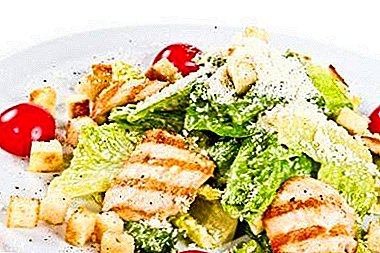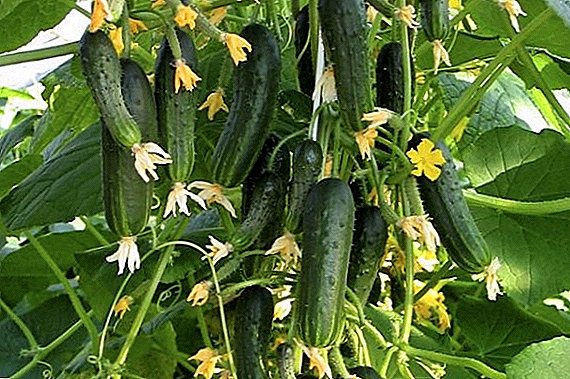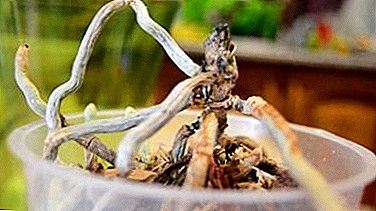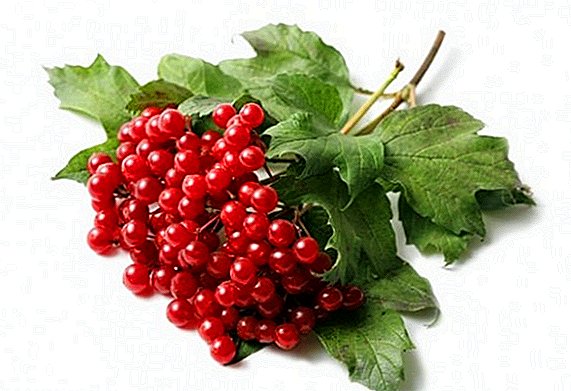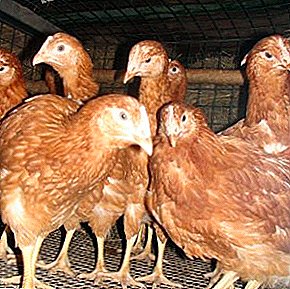
To achieve an increase in the egg production of chickens to the maximum is one of the main goals of their maintenance.
To achieve this, crosses are used, not purebreds.
Crosses are hybrids of chickens obtained by crossing intra-breed lines.
Characterized by greater productivity, resilience, endurance far superior to the original representatives.
To date, the most productive cross-country in the egg-meat direction is considered to be the breed Loman Brown.
The origin of the breed
Breed Lohmann Brown appeared thanks to the experiments of geneticists and selection works of the company Lohmann Tierzucht GmbH in Germany. Crossbred hybrids of the first generation of the four original breeds.
The birds of the paternal line are brown with black feathers on the wings and tail. Maternity hens have white plumage. The main task was to create a highly productive cross, regardless of the conditions of detention.
Description of chicken Loman Brown
 The crosses of this breed have reddish-brown plumage. At the daily age, females can be distinguished from cockerels by color: in the hens it is brown, and in the males it is white.
The crosses of this breed have reddish-brown plumage. At the daily age, females can be distinguished from cockerels by color: in the hens it is brown, and in the males it is white.
Despite the fact that chickens were brought to Russia from Germany, they are perfectly surviving in any climatic conditions.
The hens and roosters of the breed Lohman Brown are sociable, not shy. Since the direction of cross-country is egg, individuals are not prone to gaining much weight.
One of the reasons for the popularity of this species is the unpretentiousness of chickens. Hens of breed Loman Brown keep productive qualities as at private, and industrial cultivation.
Features Cross

- The key feature that Lohman Brown chickens have is high egg production. Their eggs are large, the shell is light brown in color;
high viability of chicks (up to 98%); - high precocity. This breed begins to trot early in comparison to other crosses. Chicks become sexually mature at the age of 135 days. The entire growth period is 161 days. Maximum clutch is reached at the age of 160-180 days;
- high profitability ratio of the number of eggs received to the weight of feed spent on chickens;
- As noted earlier, the Loman Brown cross-laying chickens feature is unpretentious, suitable for keeping in cages;
- hatchability of eggs during incubation cultivation - more than 80%.
In addition to the features that characterize the breed Lohman Brown from the positive side, breeding cross has its limitations:
After 80 weeks of intensive egg-laying, chickens lose their high productivity. Expediency in the maintenance of such a chicken is not, and therefore it is sent to the face.
The main features of this species, due to the nature of the selection, cannot be reproduced in the offspring. The only way to restore livestock would be to purchase young individuals or eggs for breeding in an incubator in special factories.
Growing up
 Feeding is an important condition for the full development and growth of poultry. Only acquired hens are put on quarantine and, for two weeks, they watch how they peck at the grain.
Feeding is an important condition for the full development and growth of poultry. Only acquired hens are put on quarantine and, for two weeks, they watch how they peck at the grain.
After fourteen days the diet is diversified, various supplements are administered, the daily rate is set. In the case of diarrhea, replace the water with rice water.
When kept in a cage per day, chickens consume 112-114 grams of feed. Whole breeds should not be given to chickens of this breed. It takes a long time to digest them (up to six hours).
The best feed is corn. It is suitable for both adults and young animals. Give chickens barley, do not give up millet. To get juicy, tender, tasty white meat, do not forget to add protein, fiber, vitamins from fresh vegetables to your diet. Remember, laying eggs is not possible without sufficient sunlight.
Specifications
Chickens are suitable for private breeding, not only because of their egg-like characteristics, but also because of the production of meat. 1.6-2 kilograms of females, up to 3 kilograms of a rooster - the average mass of individuals of the Lohman Brown cross.
With an insignificant feed intake per year, the layer hen of breed Loman Brown is able to bring more than 320 eggs, weighing 62-64 grams. Eggs are particularly durable.
Photo Gallery
Then you have the opportunity to see these wonderful breed of chicken Lohman Brown in the photo. Like this, they are bred in large poultry farms:
And this is a photograph from a private compound taken at the fence of the house:
Another example of the fact that at home you can breed this breed quite successfully:
Closeup, without undue comments:
And again they are engaged in this hard work - searching for something in the grass:
Well-fed, well-shaped chicken:
Where can I buy in Russia?

- 1 km from Moscow Ring Road Moscow Region, 141001 Mytishchi, Pogranichny Dead End, 4. Contact phone: +7 (915) 009-20-08; +7 (903) 533-08-22.
- 119048, Moscow, a / i 89. Phone: +7 (495) 639-99-32; email: [email protected].
- Republic of Mordovia, Saransk, ul. Kovalenko d. 7a. Phone: +7 (834) 275-82-35. Postal code: 430034.
- Belgorod region Postal address: st. Frunze, d. 198. +7 (926) 044-14-30.
- Primorsky Krai city Vladivostok, st. Magnitogorsk, 30, of.506. Postal code: 690000.
- The city of Smolensk, Roslavl highway, 7 km LLC "Viteko". Postal code: 214009.
Analogs
- Loman White. Loman White cross layers are predisposed to early maturation (4 months) and increased productivity. The number of eggs laid for the year - 340 pieces. The product has a large size and a durable white shell.
Loman White is a cross aimed at high egg production, so their weight is small. On average, the hen's live weight is 1.5 kg. The amount of feed spent in relation to the number of eggs produced is small, which makes their maintenance economical. They do not consume much feed. Loman White chickens - do not require special attention, take root in different types of climate, even when kept in poorly heated chicken coops.
- Cross hens Shaver. Dutch cross, derived from the egg direction. Color - white, black, brown.
Scampering begins at 5 months. Egg large, weighing 62 grams. Chickens weighing up to 2 kilograms. The number of eggs per year on average 405 pieces. Feed intake per day about 110 grams. Three types of cross-country: Brown, White and Black.
- Cross hens tetra. Color from white to brown. The number of eggs per year 300-310 pieces.
The average egg weight is 67 grams. The eggshell is dark brown in color. Feed consumption - 114 grams. Possess extreme vitality. High-quality egg. Chickens adapt well to different conditions.
 Hens with earflaps, in addition to their extravagant appearance, have quite good production capabilities.
Hens with earflaps, in addition to their extravagant appearance, have quite good production capabilities.Laryngotracheitis in chickens: symptoms, causes, methods of treatment, prevention measures, etc. can be found on page: //selo.guru/ptitsa/kury/bolezni/k-virusnye/laringotraheit.html.
Lohan Brown cross-country chickens have recently become one of the most popular in the markets. This is due to the fact that they are not very whimsical, can be contained in any conditions, consume a small amount of feed. Despite this, they are characterized by high egg production, good viability and healthy offspring.


